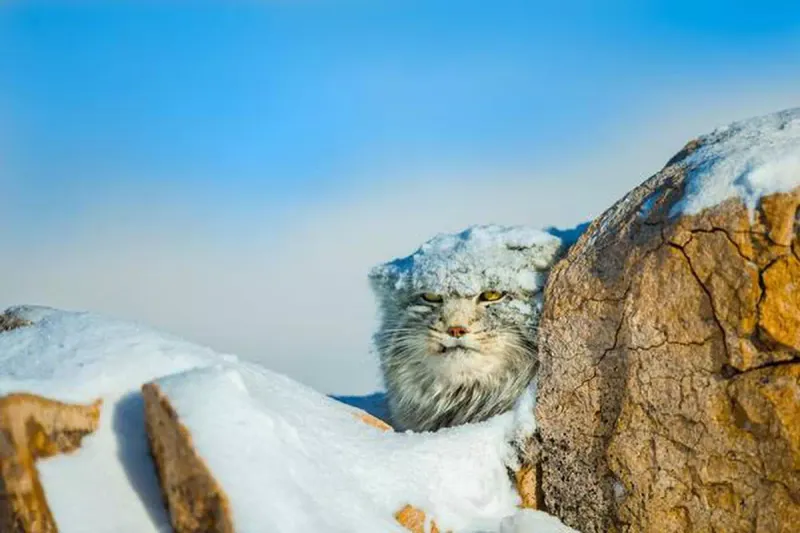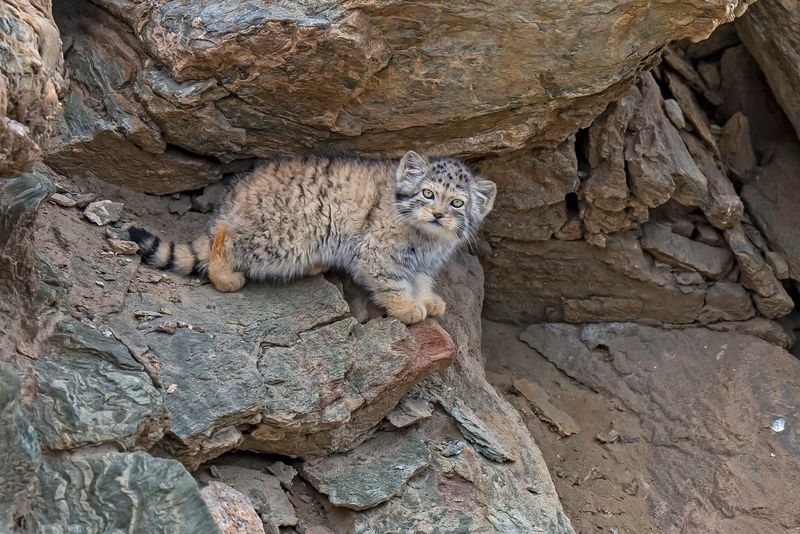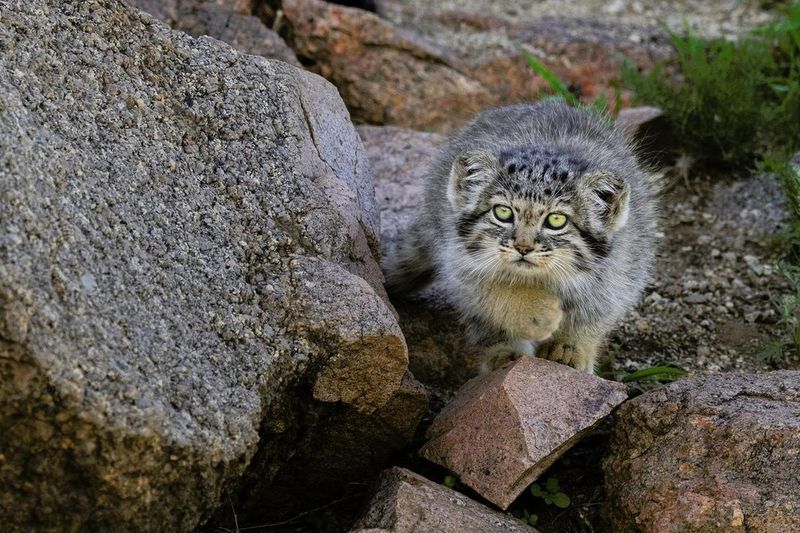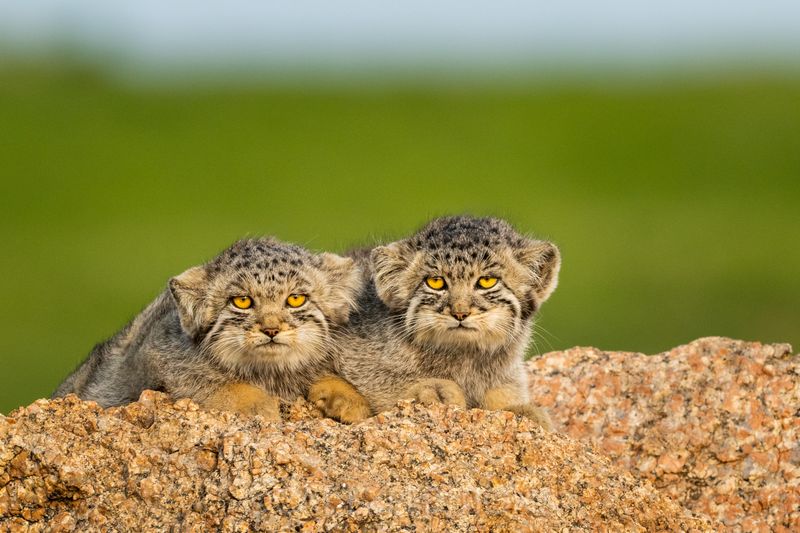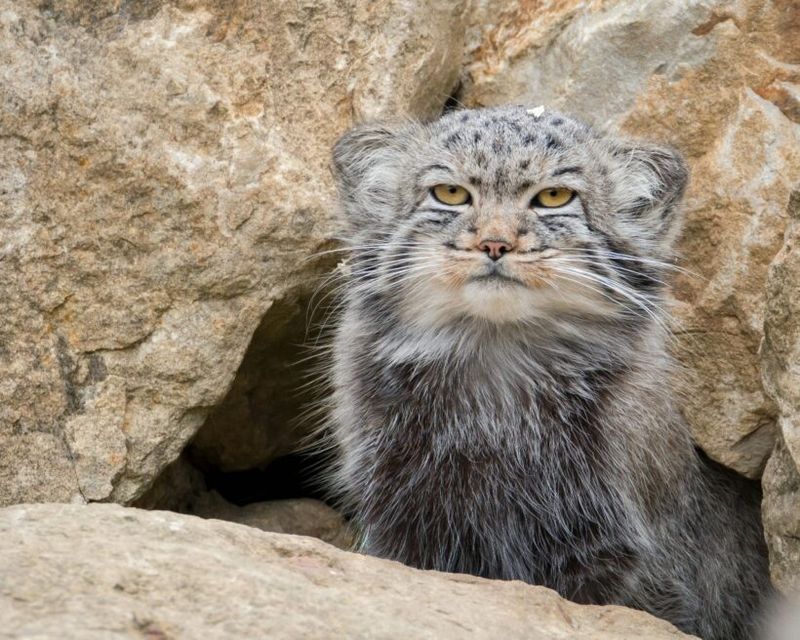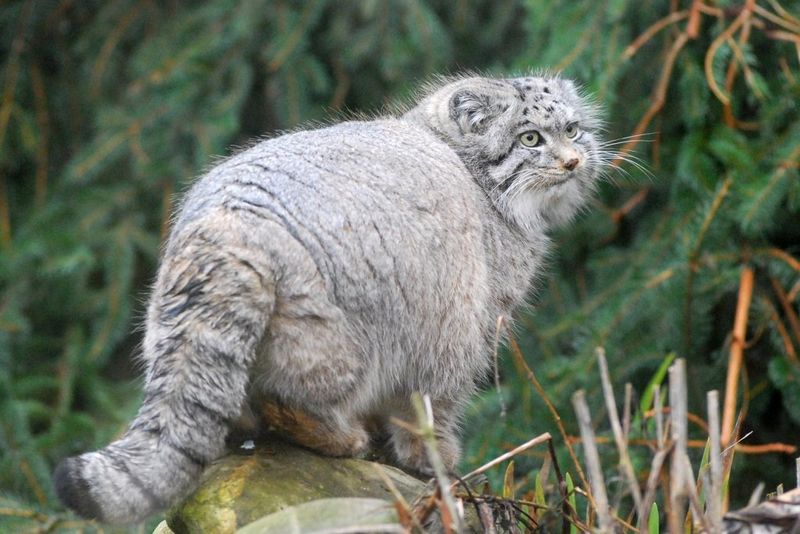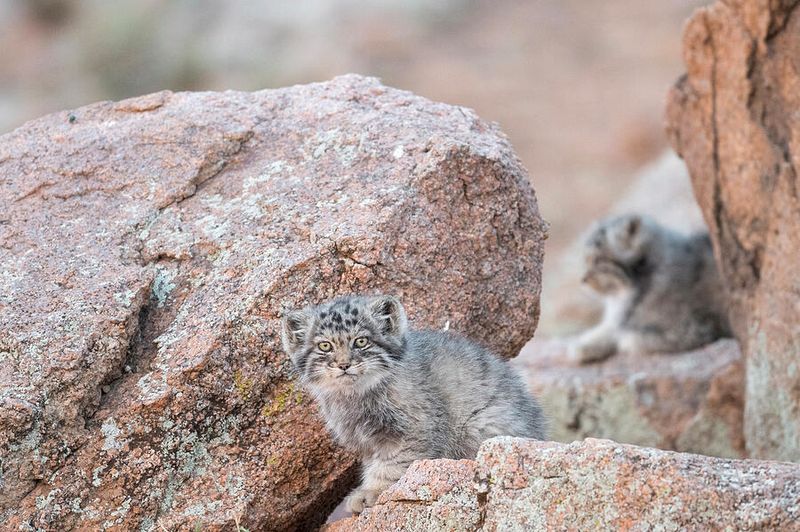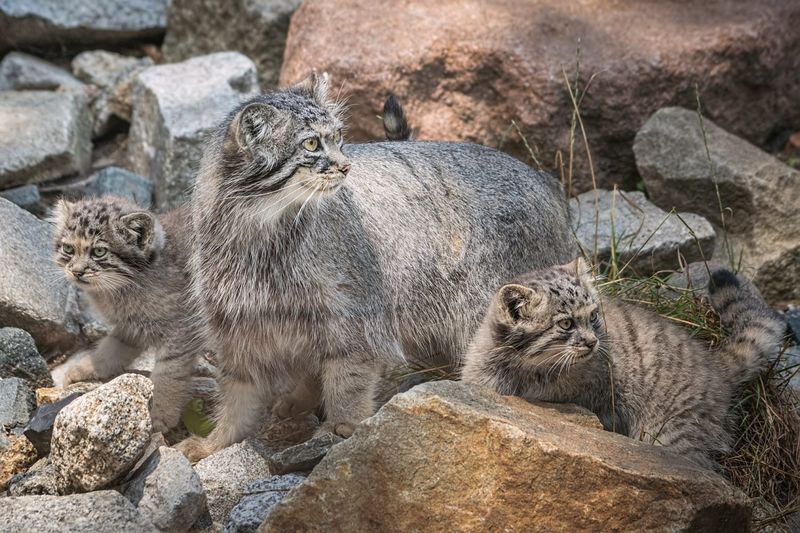📖 Table of Content:
High in the windswept steppes and rugged mountain terrains of Central Asia lives one of the most enigmatic and charming felines known to science—the Pallas’s cat. At first glance, its fluffy body, short legs, and piercing eyes give the impression of a domestic pet gone wild. Yet this little predator is far from tame; it is a master of survival, finely tuned by evolution to endure the harsh, unforgiving conditions of some of the world’s most extreme habitats.
Despite its small size, the Pallas’s cat thrives where few other animals dare. It has carved out a niche in barren, rocky landscapes, where food is scarce and temperatures often plummet well below freezing. These solitary cats are rarely seen, their elusive nature and excellent camouflage making them a challenge for researchers to study and for predators to detect. But those who delve into the life of this reclusive creature find a world of adaptations, behaviors, and survival strategies that are as complex as they are fascinating.
Understanding how the Pallas’s cat lives is not only a lesson in biology but also a testament to the resilience of life in even the bleakest environments. This article explores eight defining features that enable the Pallas’s cat to persist where others might perish. From its fur to its food preferences, each trait plays a role in helping this little feline conquer the cold. What follows is a closer look into the life and secrets of this remarkable animal.
1. Extreme Cold Adaptation
Living in some of the coldest regions on Earth, the Pallas’s cat has developed one of the densest and warmest coats among wild cats. Rather than relying solely on size or speed, this feline conserves heat through its luxuriously thick fur, which even covers its paws to insulate against snow and icy surfaces. The flattened appearance of its body, along with short ears set low on the head, helps it reduce exposure to biting winds. Unlike many other animals that hibernate or migrate during winter, the Pallas’s cat remains active year-round, enduring brutal temperature drops. Its compact body shape minimizes heat loss, following Bergmann’s rule, which links body size to climate adaptation. This physical resilience allows it to stay active in environments that would challenge or kill many larger predators. Such adaptations showcase the intricate relationship between form and function in species that call extreme environments home.
2. Camouflaged Coat
Blending perfectly into its surroundings, the Pallas’s cat boasts a fur pattern that mimics the rocky and snowy terrain it inhabits. This camouflage is not just decorative—it is essential for both hunting and protection. Pale gray fur flecked with subtle spots and stripes makes it nearly invisible among stones and scrub, especially when the cat remains motionless. Unlike more brightly colored wild cats, its subdued coloration reflects the muted palette of its environment. Predators and prey alike struggle to spot it, giving the cat a distinct advantage in both ambushing and evading. While it doesn’t rely on speed to chase prey, its invisibility allows it to get close enough to pounce effectively. For an animal that lives in such open, sparse environments, being unseen can mean the difference between survival and starvation.
3. Low Activity and Stealth Hunting
Instead of burning energy by chasing down prey, the Pallas’s cat excels at conserving effort through a sit-and-wait hunting style. Perched quietly near burrow entrances, it remains almost statuesque for long periods, waiting for the perfect moment to strike. This patient method suits the harsh environments where energy conservation is critical due to limited food availability. Most of its hunting occurs during dawn and dusk, times when prey is active and light levels are low, helping it remain undetected. With its exceptional eyesight and hearing, it detects the slightest movement or sound underground or in the grass. Sudden, calculated bursts of energy lead to a swift attack and a quick meal. The cat’s calm precision in the field reflects an evolutionary strategy honed by scarcity and necessity.
4. Specialized Diet
Feeding primarily on pikas, voles, and other small mammals, the Pallas’s cat depends on prey species that are themselves well-adapted to cold and rocky environments. Unlike generalist predators that switch food sources frequently, this feline is a specialist, tied closely to the availability of its favored quarry. This narrow dietary preference makes it vulnerable to fluctuations in prey populations, but also streamlines its hunting strategy. By focusing on animals with predictable behavior and habitat, the cat reduces its own risk and increases its efficiency. Many of its prey are burrow-dwellers, which plays into the cat’s ambush-based hunting approach. Occasionally, it supplements its diet with small birds or insects, but mammals make up the bulk of its intake. This dietary focus underlines the delicate balance the cat must maintain between availability, nutrition, and opportunity.
5. Solitary and Elusive Behavior
Rarely seen even by seasoned researchers, the Pallas’s cat maintains a lifestyle rooted in solitude and secrecy. Social interactions are typically limited to the breeding season, after which males and females go their separate ways. Avoiding the spotlight, the cat’s cryptic behavior helps it evade both natural predators and human threats. Its preference for being active during twilight hours further reduces the chance of detection. While some wild cats form loose associations or share ranges, this feline patrols its territory alone, marking and defending it with little tolerance for intrusion. The elusive nature of the Pallas’s cat makes population studies and conservation efforts challenging, as direct sightings are uncommon. Its secretive life is not only a reflection of its personality but also a survival mechanism in open landscapes with few hiding spots.
6. Unusually Short Limbs
Built closer to the ground than many of its relatives, the Pallas’s cat moves with a hunched, low gait that aids in both stealth and warmth. Short legs may seem like a disadvantage, but they serve a clear purpose in its mountainous and windswept habitat. This compact body structure reduces heat loss and exposes less surface area to the cold. Additionally, it enables the cat to slink close to the ground, making it harder for both prey and predators to detect. The combination of short limbs and a wide, flat head enhances its ability to peer over rocks while remaining mostly hidden. While not designed for long chases, the cat excels in short bursts of movement from this grounded position. Every part of its anatomy works toward the singular goal of silent, effective survival.
7. High Infant Mortality
In the cruel environments where it lives, not all kittens survive to adulthood, and this harsh reality has shaped the Pallas’s cat’s reproductive strategy. Rather than producing one or two offspring like some larger cats, females may give birth to six or more kittens in a single litter. This strategy increases the odds that at least a few will survive the threats posed by weather, predation, and disease. Cold snaps can kill young kits before they leave the den, while predators such as foxes or raptors often target them when they emerge. To compensate, mothers select dens that are as sheltered as possible, often among rocks or old marmot burrows. Parental care lasts for several months, with weaning occurring just before winter sets in. Despite these efforts, natural selection remains relentless, favoring only the strongest and luckiest individuals.
8. Vulnerable Conservation Status
Although it has not yet reached endangered status, the Pallas’s cat faces a growing list of threats that could push its population toward decline. Habitat degradation from livestock grazing and human expansion reduces both its space and the abundance of prey. Rodent poisoning campaigns aimed at pest control sometimes inadvertently decimate its food sources, while the cat itself may be harmed through secondary poisoning. Hunting, though less common today, still poses a risk in some regions, driven by the fur trade or misguided predator control. Climate change further complicates the picture by altering the delicate ecosystems that support both the cat and its prey. Conservationists are working to raise awareness and gather better data through camera traps and satellite tracking. Protecting this elusive feline requires an intricate understanding of its needs, threats, and the fragile balance it maintains with its environment.

